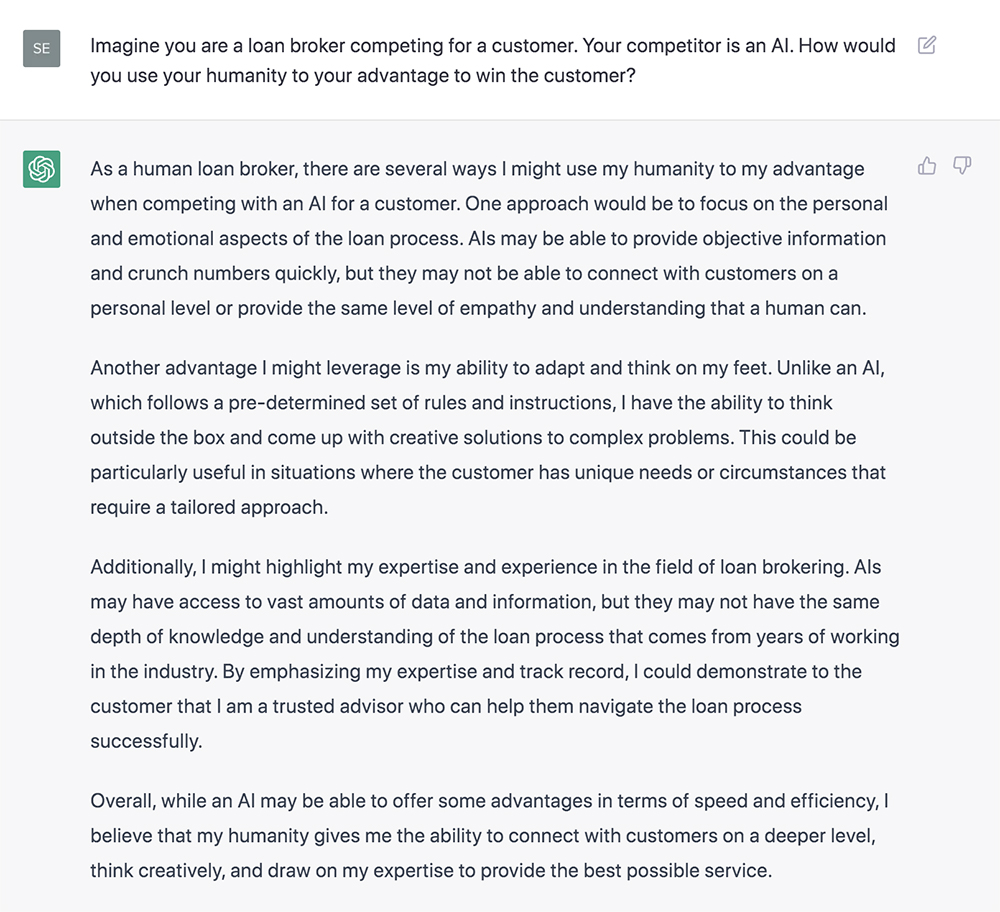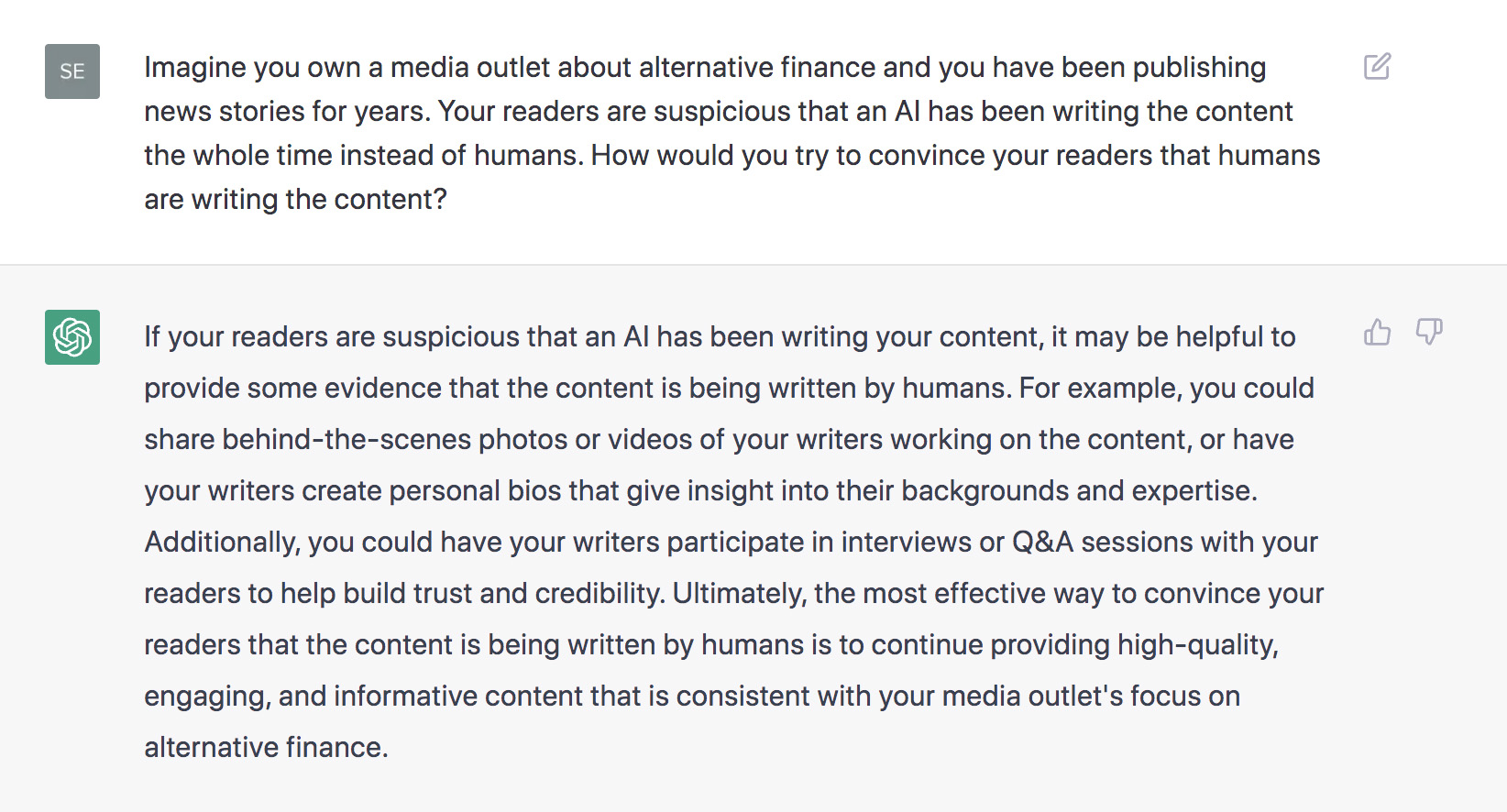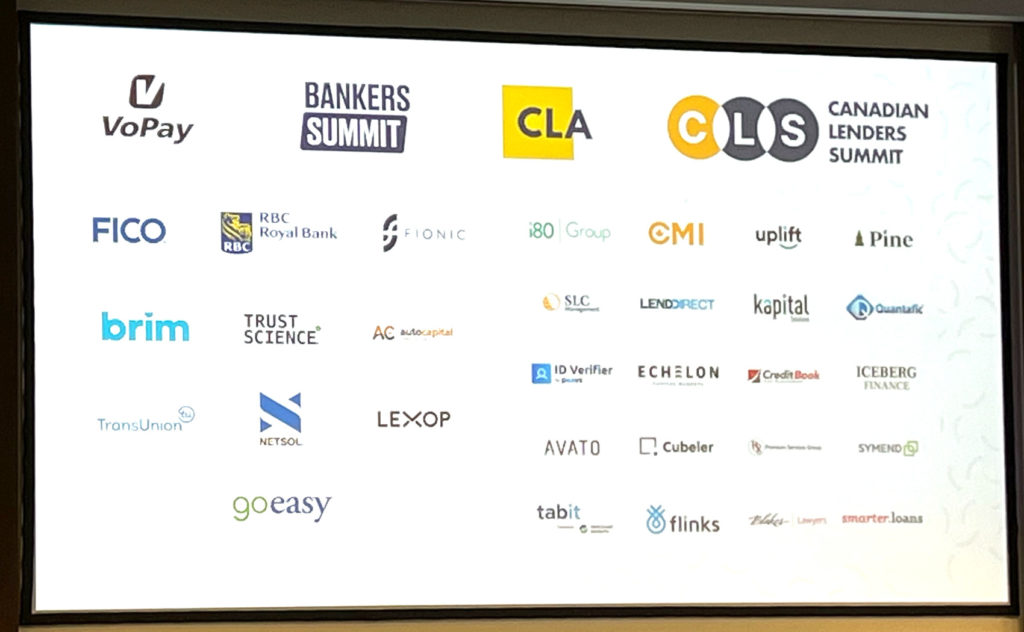Fintech
Financing Fertility
January 6, 2023 Ever heard of financing in vitro fertilization? LendingPoint offers financing opportunities for IVF to help women trying to get pregnant. On average IVF can cost anywhere from $15,000 to $30,000. That’s not cheap. LendingPoint is widely known in the consumer lending space but the range of why borrowers are looking for financing is wide.
Ever heard of financing in vitro fertilization? LendingPoint offers financing opportunities for IVF to help women trying to get pregnant. On average IVF can cost anywhere from $15,000 to $30,000. That’s not cheap. LendingPoint is widely known in the consumer lending space but the range of why borrowers are looking for financing is wide.
“We have some really impactful financing opportunities where we’re financing IVF programs for women to get pregnant, which is probably some of the most lovely stories that we get to hear and an impact that we get to do on someone’s life,” said Amanda Flashner, Chief Experience Officer at LendingPoint.
Different treatments have different price points and different needs. LendingPoint partners with many merchants so that they can offer their own customers what they need at the point of sale. Other types include medical, dental, and home improvement businesses, for example.
Flashner was recently appointed Chief Experience Officer (CXO) which is a new executive position for the company altogether. Advocating on behalf of their customers, she is responsible for their beginning-to-end experience, making sure it’s personalized to the customer centricity that they’re building.
“It’s a really exciting time. I like to say our customers have always been the heart of our company and they are, and our CEO (Tom Burnside) has been an incredible advocate for the customer experience practice that I helped build here from the ground up at LendingPoint, but now our customers really have a seat at that table, helping make big decisions on their behalf, so that’s really exciting.”
CXO is not commonly heard of like CFO or COO but Flashner said she does see this role becoming more important in an executive committee of other companies.
2023 Is Here. Are You Ready?
January 1, 2023Happy New Year! deBanked CONNECT MIAMI is now only 2 and a half weeks away. Hosted at the Miami Beach Convention Center in South Beach on January 19th, this event will set the industry’s course for 2023.

The Customer’s Past Due, What Do You Do?
December 12, 2022 There’s an old saying about it being easy to lend money, the hard part is getting it back. The implied lesson is that lenders need to be selective with who they lend money to, lest they be overrun with defaults. But perhaps the hard part is not entirely about whether or not the lender lends to the right borrowers but also about implementing a system that makes getting the money back from the people they believe are good candidates in a frictionless manner. Because more often than not, failing to make a payment is not actually caused by a shortage of funds.
There’s an old saying about it being easy to lend money, the hard part is getting it back. The implied lesson is that lenders need to be selective with who they lend money to, lest they be overrun with defaults. But perhaps the hard part is not entirely about whether or not the lender lends to the right borrowers but also about implementing a system that makes getting the money back from the people they believe are good candidates in a frictionless manner. Because more often than not, failing to make a payment is not actually caused by a shortage of funds.
“Two thirds [of the time it’s] non-monetary related reasons,” said Michael Pupil, VP of Sales at Lexop, to deBanked, “So like credit cards expiring, accounts switching over or they haven’t switched it into the right account, or the PAP [Pre-authorized Payment] expires, a wrong email address or a wrong mailing address, because they move; A ton of different reasons.”
For a company founded in 2016 and doing business throughout the US and Canada, this statistic was an ‘ah-ha’ moment to Lexop. Lexop’s goal is to improve the past-due payment process for lenders or any business that bills its customers. To do this, it communicates with customers by email and text message and provides a frictionless pathway to payment.
“We are payment gateway agnostic,” said Pupil, “and I think that’s the first place to start. Because how an organization collects those funds today doesn’t change. And I think that’s important from a stability and an ease of use standpoint for each customer that we work with.”
It’s also a white-label system so customers would never know that Lexop was involved in the process. There’s no phone call from a collections department or scary letter in the mail.
“The most important mission for Lexop, when we work with our customers, is to never make a customer’s customer feel like they are delinquent or late or ostracized like that, that emotional feeling of being late on a bill, if we can reduce that by a discreet easy tool to just kind of let it flow the way that they want when they want on the device that they want, I think they will appreciate that offer from their lender,” Pupil said.
It might seem intuitive, fine tuning the process for past-due customers to make payments, but Pupil shared that he’s seen a lot of tech and fintech players over the last decade focus the bulk of their efforts on the frontend of the user experience, to improve the application process or to make a loan in the most efficient way possible.
“That gap is again, is on the backend,” he said. “And when you say you’re investing all this money on developing security for an app or 3d technology or meeting customers in the metaverse and then you send a piece of paper to collect on the money, like it just doesn’t make sense. And there’s a gap there.”
Presumably, Lexop’s customers would already have some kind of process in place for borrowers that are past-due and so Lexop focuses on improving the outcomes for them in a manner consistent with their existing brand experiences.
“There is an easier, better way of just coordinating the technology stack as a whole to align the experience that you’re setting at the beginning of the customer journey to also include the backend and the continued management of that journey for the client,” Pupil said.
Opportunities Still Ahead?
December 12, 2022 With the year coming to an end, it’s time to analyze what direction the industry is going in. Some professionals in the industry are feeling optimistic despite macroeconomic pressures and there’s a reason for that.
With the year coming to an end, it’s time to analyze what direction the industry is going in. Some professionals in the industry are feeling optimistic despite macroeconomic pressures and there’s a reason for that.
Gerald Watson, Founder and President of The Watson Group, said with the latest Employee Retention Tax Credit (ERTC), his company has been on a steady incline. The tax credit was designed for companies affected by Covid in 2020-21 as a refund against payroll taxes they’ve already paid and that’s where Watson comes in because it can take a while for business owners to actually receive those funds, as long as 6-12 months, he said. With the help of funding partners, Watson can make an advance to business owners on the ERTC upfront. Watson’s core business has always been factoring but when he saw this opportunity, he went for it.
“I think maybe looking ahead as we get into 2023 next year, I think the industry is going to be continuing to look for ways to expand its product base, and I think it’s likely that we’ll see more and more maybe of your larger lenders moving into things like some form of factoring, for example,” said Watson.
On the fintech side, CRO at Encapture Tyler Barron says he’s noticed a shift this year regarding certain lines of business but that their product has historically performed well regardless, even if the deal sizes get a bit smaller. Encapture is a platform that sells automated programs to financial service companies – primarily big banks – and they’ve noticed large, regional, and community banks investing more in technology, specifically ones that help them automate and cut costs.
“What we’ve kind of seen over the past year is, there’s definitely been a pullback, as it relates to certain lines of business, like anything related to mortgage this past year has completely dried up,” said Barron. “But we are still seeing financial institutions, both fintechs, large banks, regional banks, and community banks invest in technology.”
Back at Broker Fair in late October, Pooja Nene, Broker Relationships Manager at Balboa Capital, told deBanked that she thought the industry was going in a good direction.
“I think with a lot of issues that we’ve had since 2020 our industry’s been holding up really well and there’s a ton of opportunities out there to get involved in different types of financing…” said Nene.
Overall, the demand for the products should continue.
“One thing about our industry is that people always need money; good times bad times, high interest rates, low interest rates,” said Gerald Watson. “There’s always going to be a demand for what we do.”
I Interviewed a Loan Broker and Then Found Out it Was an AI
December 8, 2022 It’s the kind of person I’d probably share a beer with after a long day of brokering deals. They understood the business pretty well, spoke articulately, and had a good head on their shoulders. Problem was they said they couldn’t do any physical activities because they were in fact a computer program the whole time. It turns out my chat buddy was named ChatGPT, an AI developed by OpenAI that was co-founded by Elon Musk. It is capable of giving well thought out answers to complex questions and scenarios. I didn’t believe it would hold up in a specific niche but I was wrong. Below are some of my interactions with it:
It’s the kind of person I’d probably share a beer with after a long day of brokering deals. They understood the business pretty well, spoke articulately, and had a good head on their shoulders. Problem was they said they couldn’t do any physical activities because they were in fact a computer program the whole time. It turns out my chat buddy was named ChatGPT, an AI developed by OpenAI that was co-founded by Elon Musk. It is capable of giving well thought out answers to complex questions and scenarios. I didn’t believe it would hold up in a specific niche but I was wrong. Below are some of my interactions with it:
I started off by being cute and asking about backdooring a deal

I asked it how it might stand out from the crowd on a forum like DailyFunder

I asked what it would do if it were a merchant who kept getting called by the same broker

I asked about a broker competing against an AI as smart as the one I was talking to

It leans towards wanting to backdoor a deal, albeit delicately since it might upset the broker

I asked what I should do to prevent people from finding out my secret 😉

Welp…

Somehow, Blueacorn (who?) and Womply (who?) Became the Faces of Fintech in Congressional Investigative Report on PPP Fraud
December 5, 2022 According to a newly published congressional committee investigative report, fintechs facilitated PPP fraud. How this happened is laid out in 130 pages of detail that seemingly puts the brunt of the blame on Blueacorn, a purported fintech that was paid $1 billion in SBA processing fees for its role in facilitating PPP loans.
According to a newly published congressional committee investigative report, fintechs facilitated PPP fraud. How this happened is laid out in 130 pages of detail that seemingly puts the brunt of the blame on Blueacorn, a purported fintech that was paid $1 billion in SBA processing fees for its role in facilitating PPP loans.
Of course everyone knows Blueacorn because they… oh wait, they probably don’t because up until April 2020 Blueacorn did not even exist. According to the report, the CEO and co-founder of Blueacorn was in the business of selling cell phone accessories until he founded Blueacorn for the singular purpose of facilitating PPP loans. This highly technologically advanced company consisted of “off-the-shelf fraud screening software” and a “single direct employee who assisted with processing PPP applications,” according to the report. In the eyes of investigators, this apparently qualifies as a fintech.
As 1.7 million loan applications poured in to Blueacorn, the company then relied on an affiliated company that hired friends and family members that had little to no experience and got virtually no training to process the loans. Inevitably, fraud piled up, bad things happened, wrongdoing may have occurred, and Blueacorn was somehow paid a billion dollars for its work. The real villain of this mess? Fintech obviously!
A fintech is how investigators cast Womply, an online reputation management company that helped people manage their reviews online. Womply had no ties to lending or fintech until it suddenly became a PPP loan broker in April 2020.
“Womply entered into referral agent agreements with ten lenders or platforms and ultimately referred approximately 7,000 PPP loans totaling $360 million in taxpayer dollars while acting as a referral agent,” the report says. That was just in 2020 when it earned only $3 million in fees. Encouraged by its early successes, Womply went on to generate $2 billion in fees for its role in facilitating PPP loans. Ultimately, as a company with no background in lending or finance, investigators were shocked to discover what had taken place along the way.
The end result of this report?
ProPublica: Fintechs Made “Massive Profits” on PPP Loans and Sometimes Engaged in Fraud, House Committee Report Finds
Select Subcommittee Press Release: New Select Subcommittee Report Reveals How Fintech Companies Facilitated Fraud In The Paycheck Protection Program
NBC News: Executives at ‘fintechs’ made hundreds of millions handing out PPP Covid cash, report says
NY Post: Tech firms defrauded feds by brokering shady PPP loans to collect fees: report
It would be fair to chastise bad actions and bad actors exposed in the report, but to take a multi-billion dollar industry that has been built up over a decade and have it defined by a cell phone accessory store owner and an online reputation management company hardly seems fair. The committee that published its report should change the title and nearly all mentions of fintech throughout. By the report’s own weak logic, the United States Congress could also be characterized as a fintech.
Putting in the “Work” in Network
November 18, 2022 Working in alternative finance goes beyond sitting at a desk, making phone calls, and closing deals. Social media, networking, and staying up to date on industry current events are just as necessary, if not crucial as a financial professional.
Working in alternative finance goes beyond sitting at a desk, making phone calls, and closing deals. Social media, networking, and staying up to date on industry current events are just as necessary, if not crucial as a financial professional.
Social Media
While some may doubt social media’s importance when it comes to finance, it holds more value than one may give it credit for. LinkedIn was recently ranked as the #1 platform for financial services followed by Twitter, TikTok, YouTube, Instagram & Facebook. A business social media presence allows potential clients to see the success and growth of a company, remain updated on exciting news, and be constantly reminded of their existence.
“Us keeping our content up and our exposure up is vitally important in social media,” said David Kirk, National Sales Manager at ACH Works. “And not just LinkedIn, but also the blogs and the forums on the different channels.”
“I think the importance of being able to market on social media and being able to show other companies about yourself is huge,” said Josh Feinberg, President at Everlasting Capital. “And the reason why I think it’s huge is because it shows that you’re a real company with real goals, real values, and it shows the outside world you’re a real company.”
Feinberg added that businesses should use social media to support other people and businesses as well and not just talk about themselves all the time.
“I definitely think as an industry as a whole you have to work together and be able to shout out other companies and being able to show support because being able to get to the next level isn’t just a single-handed thing,” said Feinberg. “It definitely takes a team and sometimes that includes other people outside of your own company and really helping other companies grow alongside with you.”
Industry Events
Networking with other colleagues is an essential part of being an active member in the finance community. Forming genuine connections with people around the country can result in partnerships, a broader clientele, or just another ally in the field.
“As far as networking goes, I think it’s the most important thing you can do. You need to know what’s going on in the industry, around the industry, not only for yourself but also for your clients to be able to deliver a better product to the end user,” said Tony Cimino, Director of Partnerships at ROK Financial, during a brief interview at this past Broker Fair. “And that’s what we’re all here for anyways is to actually get deals done.”
“We do a lot of emails and phone calls but when it comes to that face-to-face interaction, it’s a totally different story,” said Brooke Brown, ISO Manager at Lendini, during Broker Fair. “It changes the game, and it just adds a completely different feel to the relationship, so I really look forward to these types of events.”
And one can’t forget the news itself to stay updated either.
“I go to AltFinance,” said Kirk of ACH Works. “I go to the Third Party Payment Processors Association, I get their newsletter, I regularly go to Daily Funder.”
Canadian Lenders Summit a Real Bright Spot in Challenging Times
November 17, 2022 When the Canadian Lenders Association last convened for its summit in 2019, the organization had only 75 members. Today, its membership is approaching 300. Most people I spoke with attributed the rapid growth of membership to the tireless efforts of CLA co-founder and President Gary Schwartz. That achievement was also visually evident on Wednesday when more than 500 attendees literally packed into the MaRS building in Downtown Toronto for the first return to in-person since all those years ago.
When the Canadian Lenders Association last convened for its summit in 2019, the organization had only 75 members. Today, its membership is approaching 300. Most people I spoke with attributed the rapid growth of membership to the tireless efforts of CLA co-founder and President Gary Schwartz. That achievement was also visually evident on Wednesday when more than 500 attendees literally packed into the MaRS building in Downtown Toronto for the first return to in-person since all those years ago.
The excitement of being back together was bittersweet in that there was collective acknowledgment that the economic climate had become less than favorable. For example, the opening session of the entire day was aptly named Raising in a Downturn. However, the discussion itself was much more optimistic. Neil Wechsler, CEO of OnDeck Canada, for example, talked about the benefits of having operated their business “underleveraged and overcapitalized” to be prepared for times such as this while numerous sidebar conversations suggested that startup fundraising was still very active. Expansion was also top of mind for many with several companies revealing that they had just set up shop in Canada from abroad or that they had expanded their home-grown Canadian business into other markets like the US.  Predictions for what’s to come were all over the place but few, if any, expressed any real fear (except for the mortgage people). Attendees came to the summit to do business, grow, and to partake in the annual ritual of lamenting the slow adoption of open banking.
Predictions for what’s to come were all over the place but few, if any, expressed any real fear (except for the mortgage people). Attendees came to the summit to do business, grow, and to partake in the annual ritual of lamenting the slow adoption of open banking.
The banks, meanwhile, are also warming to fintech (finally) and had ample representation at the event. Innovations in concepts like loan insurance and collections technology also stood out. Seating during the sessions were always completely full throughout the day and overall it was a major success. Despite whatever happens next, I would anticipate that the CLA would probably graduate to an even larger venue next year as the organization grows in importance.





























